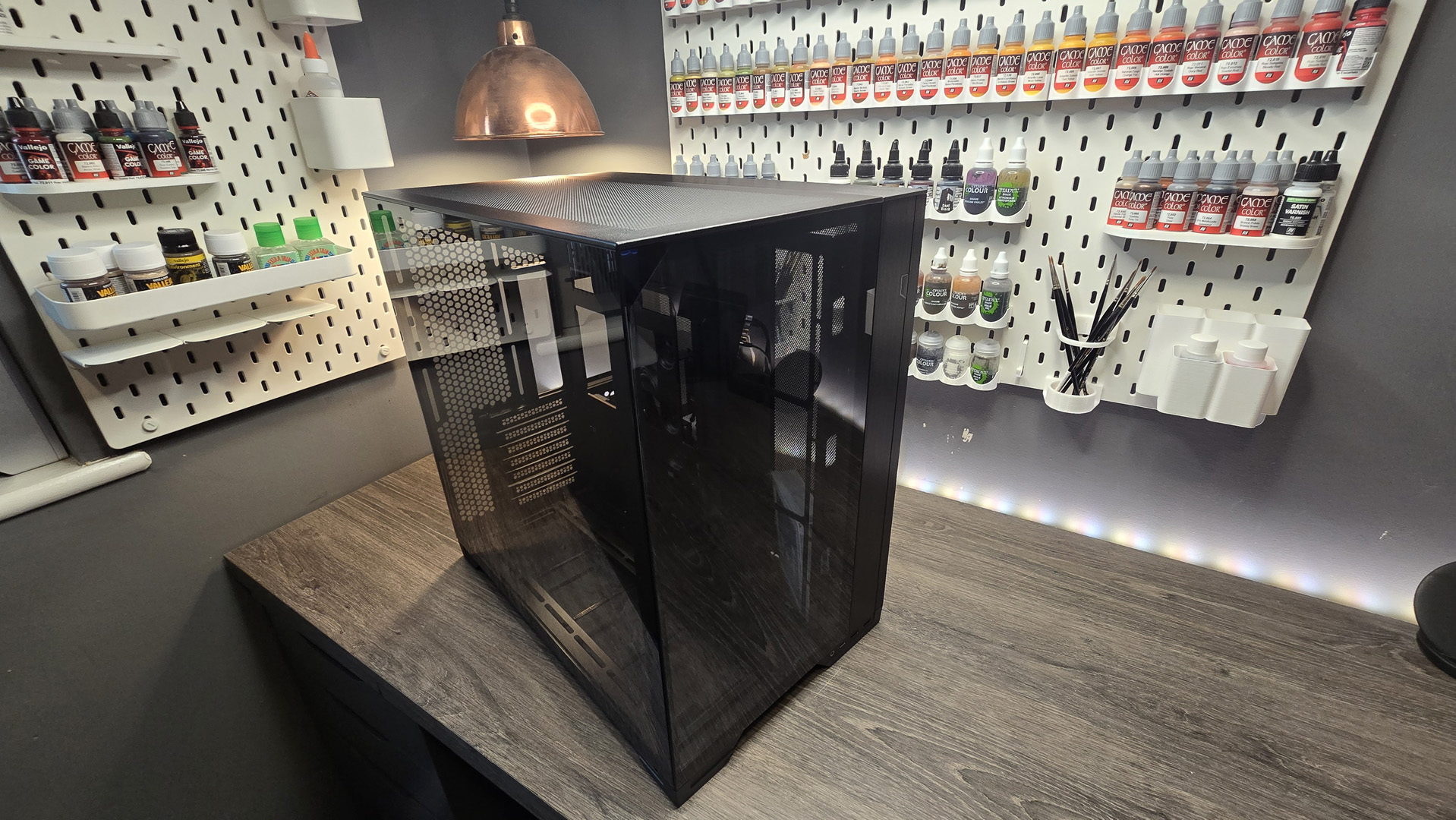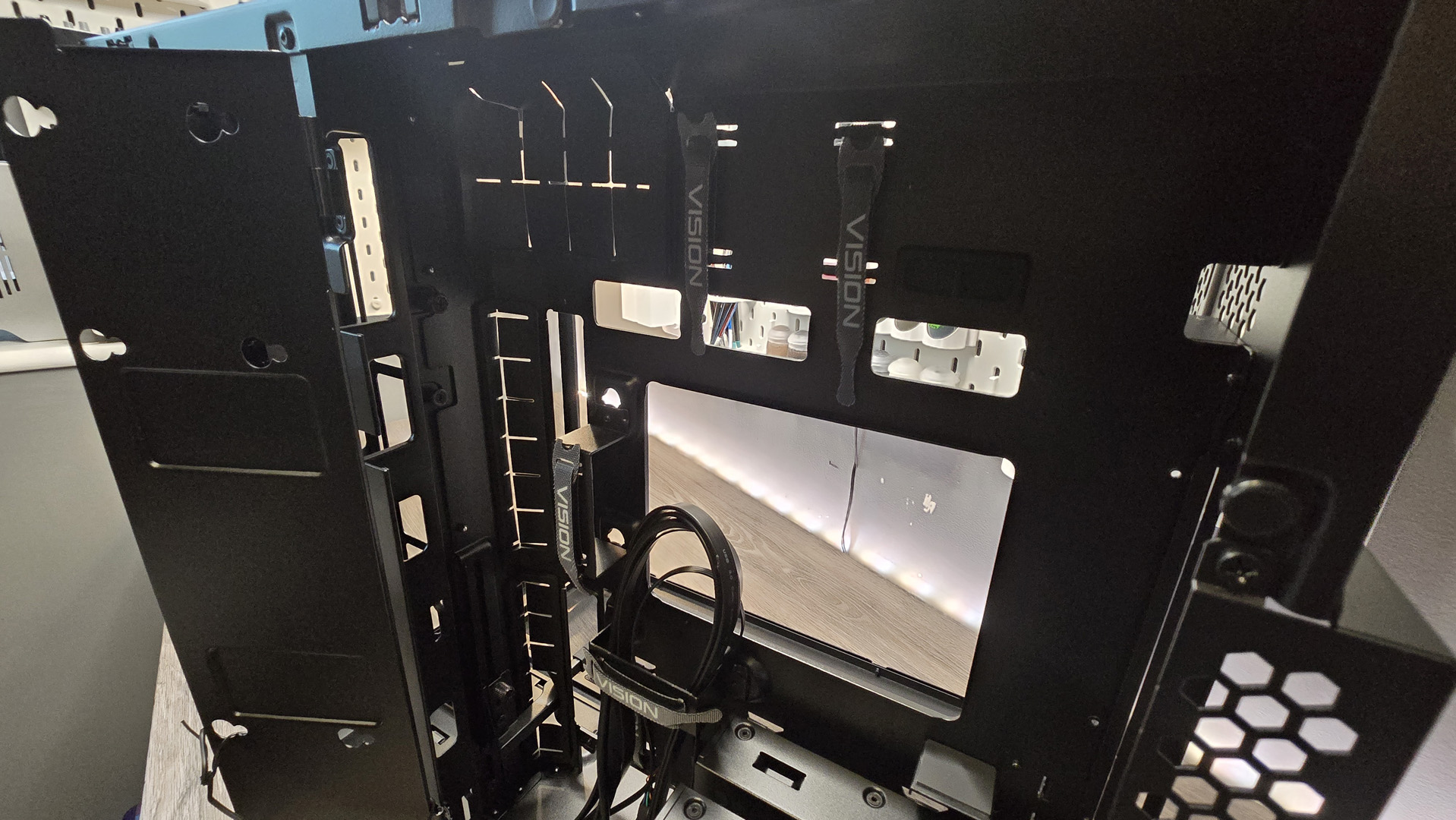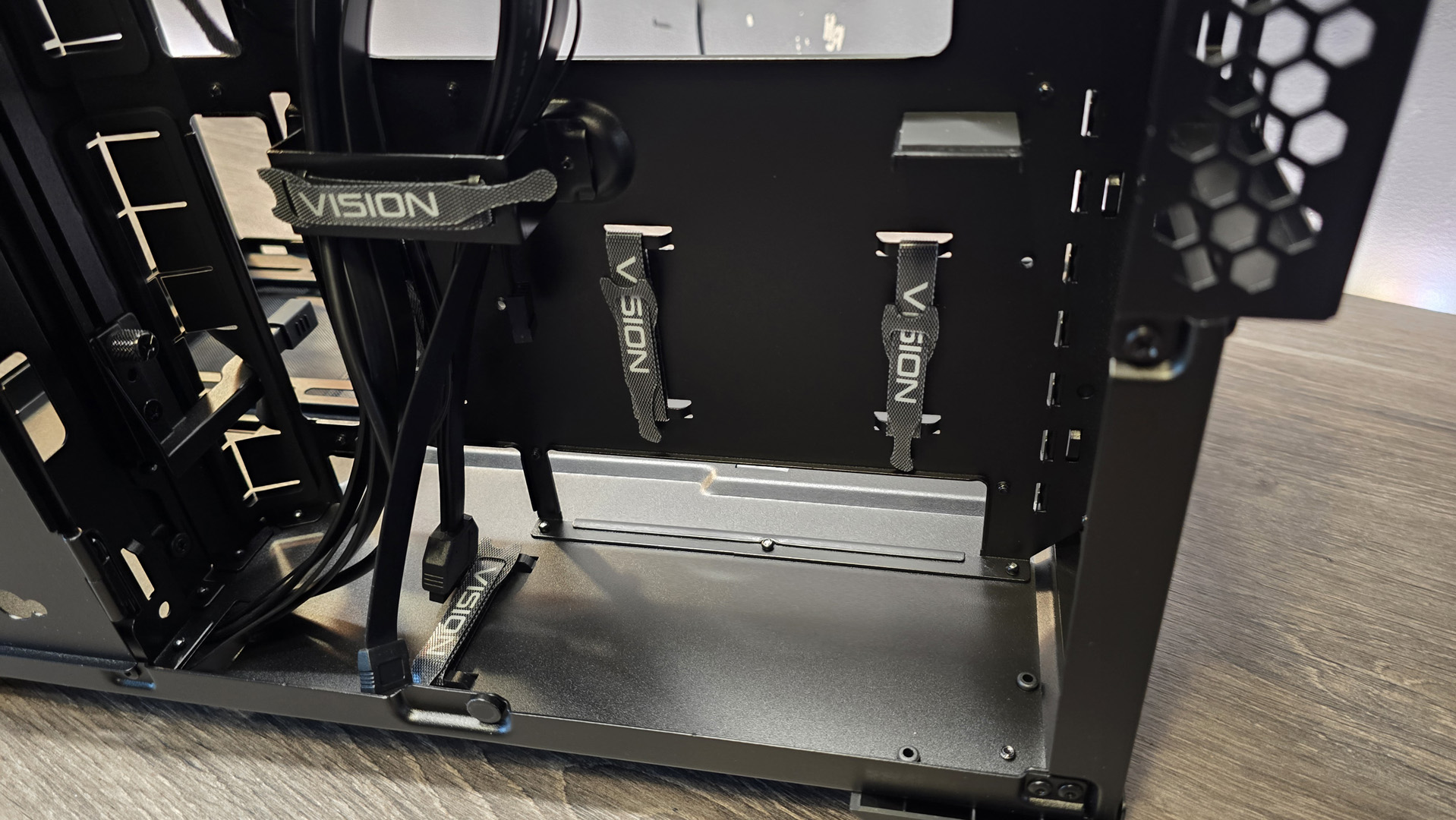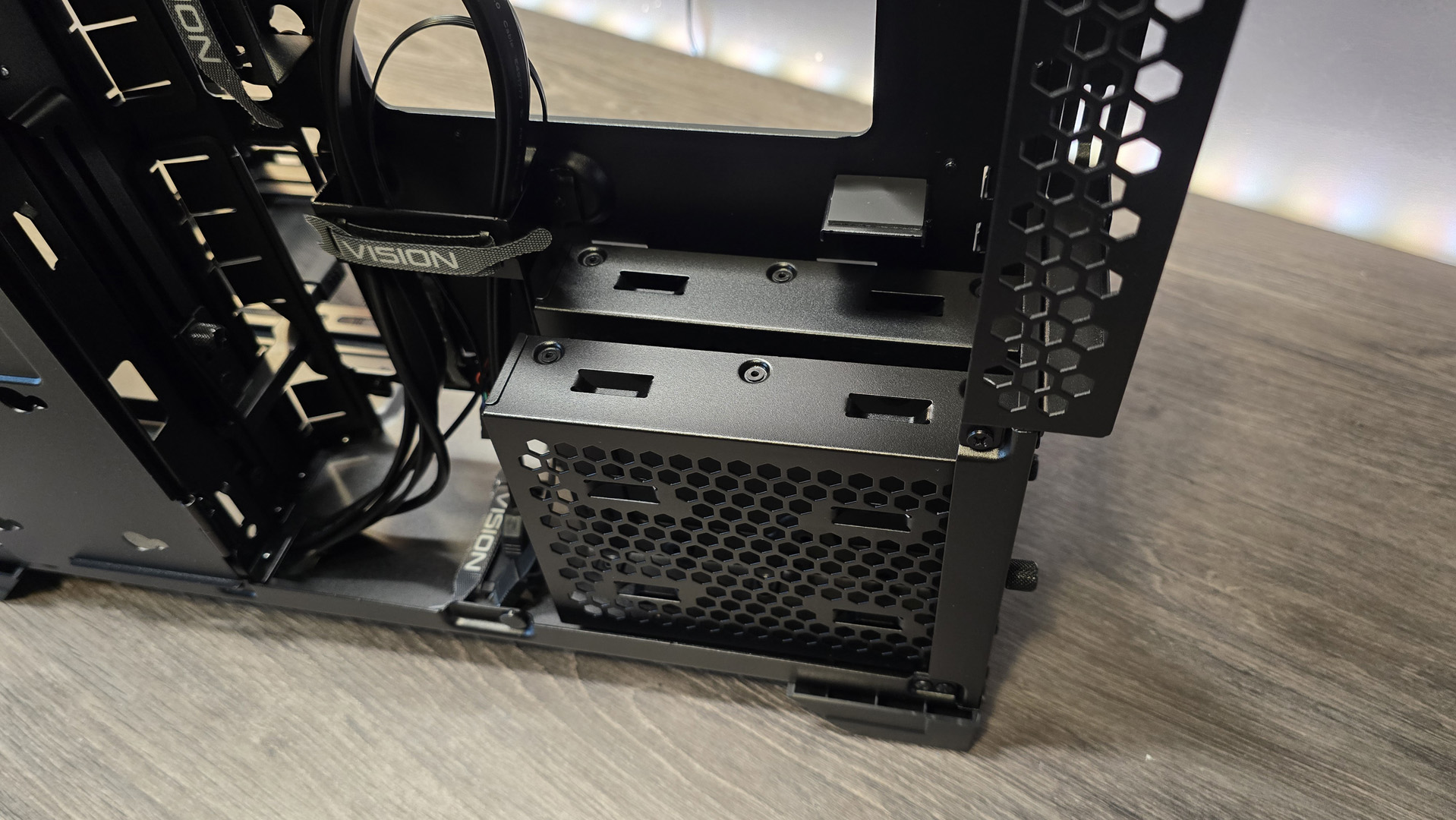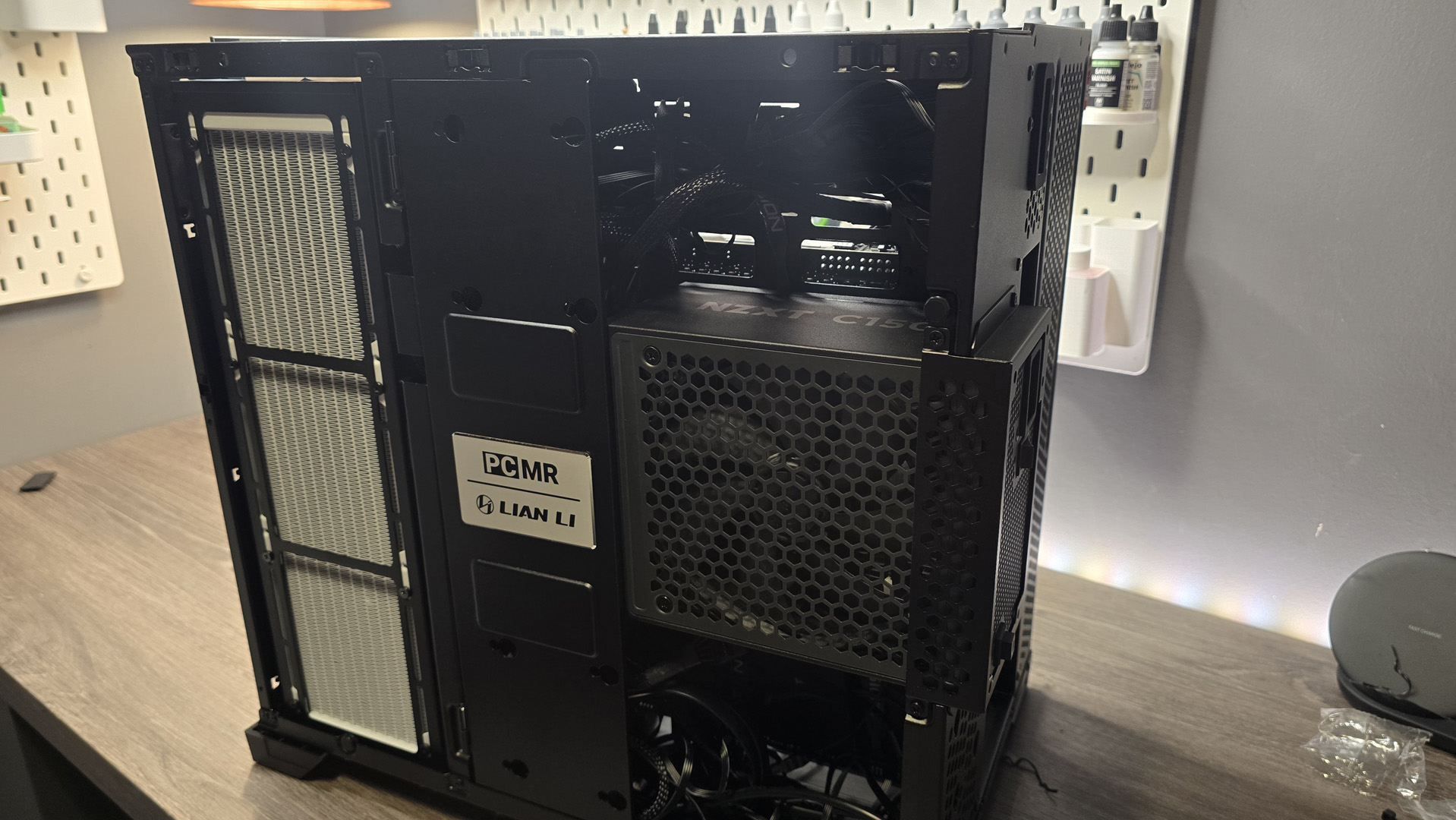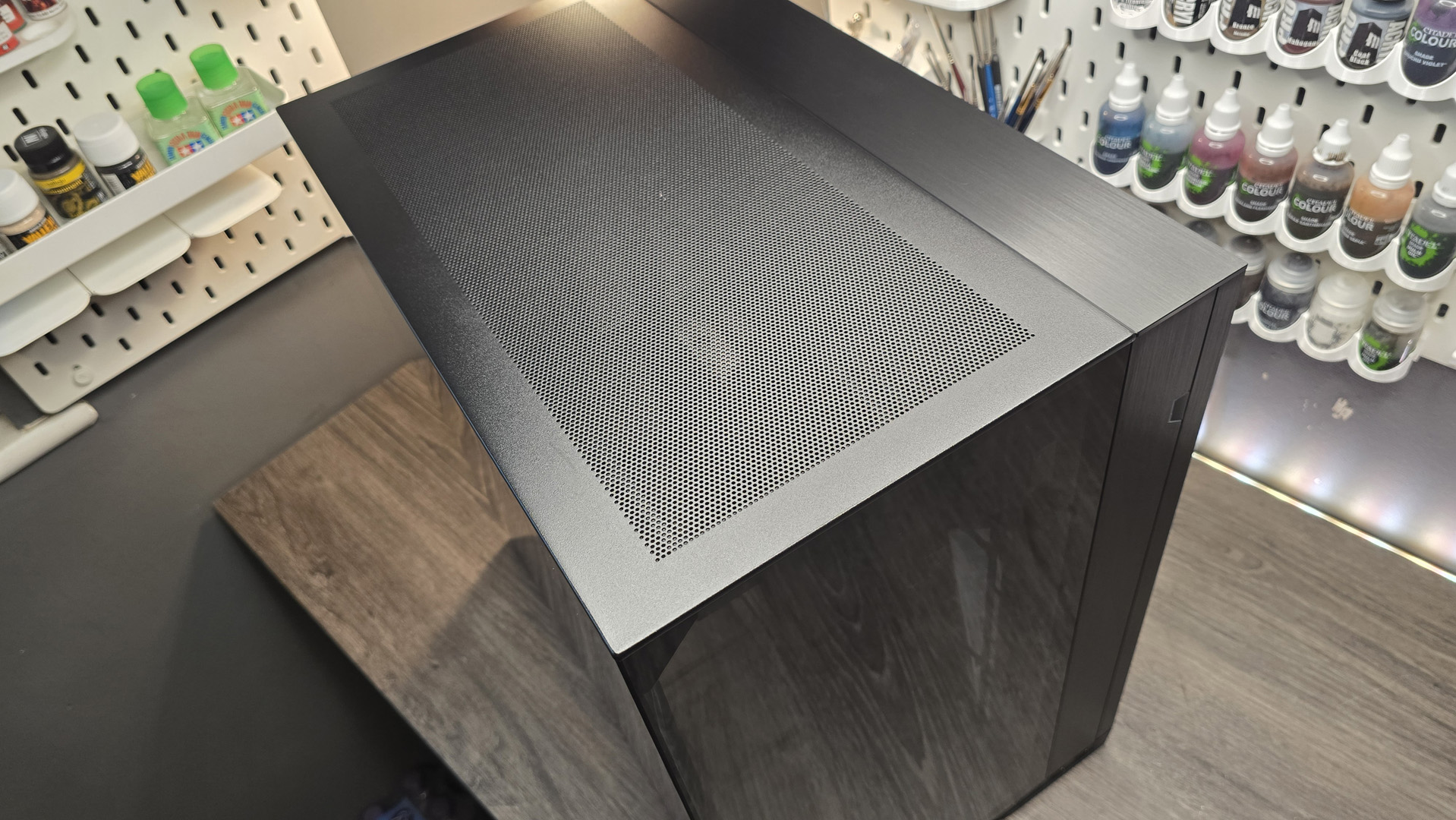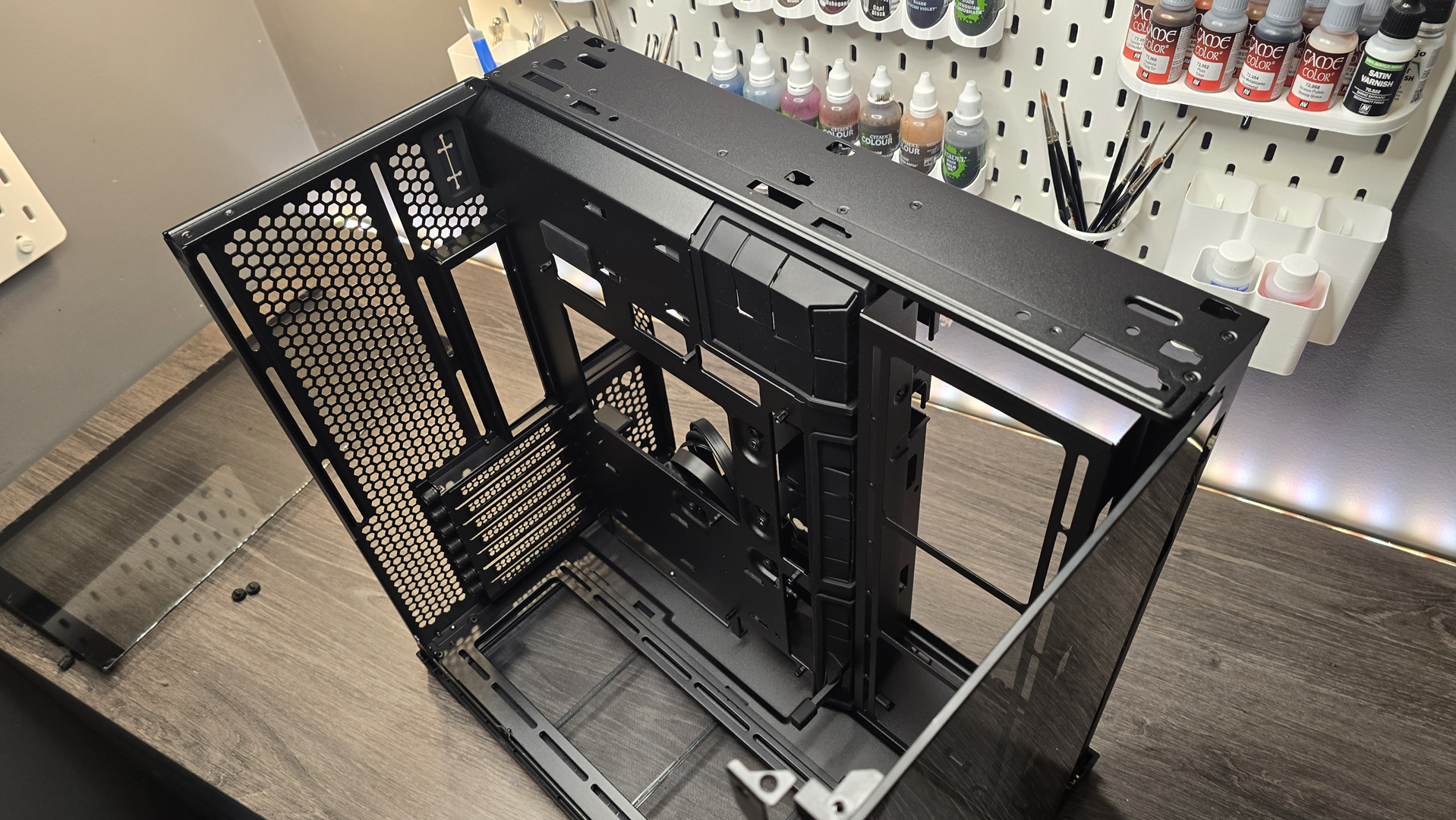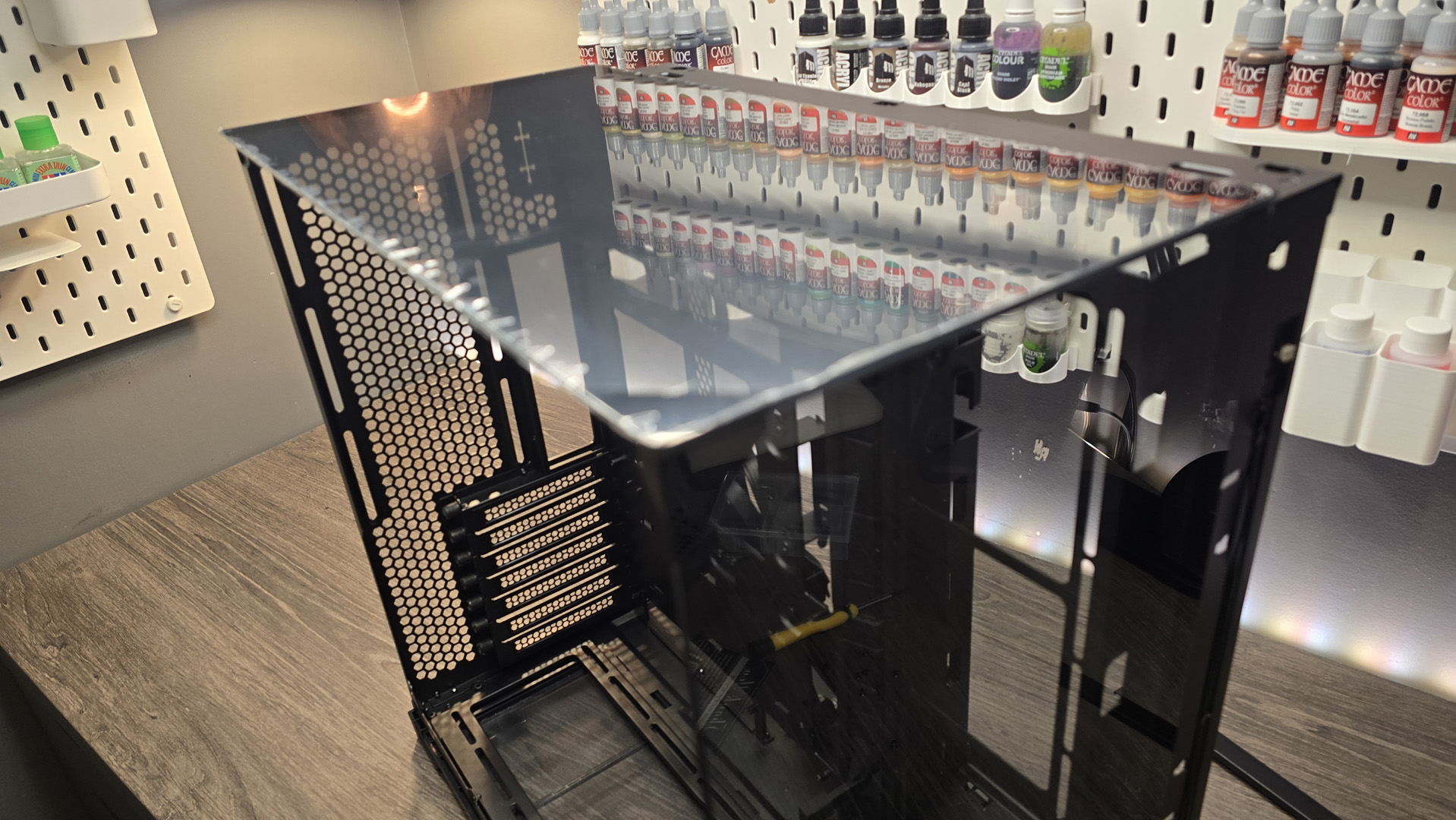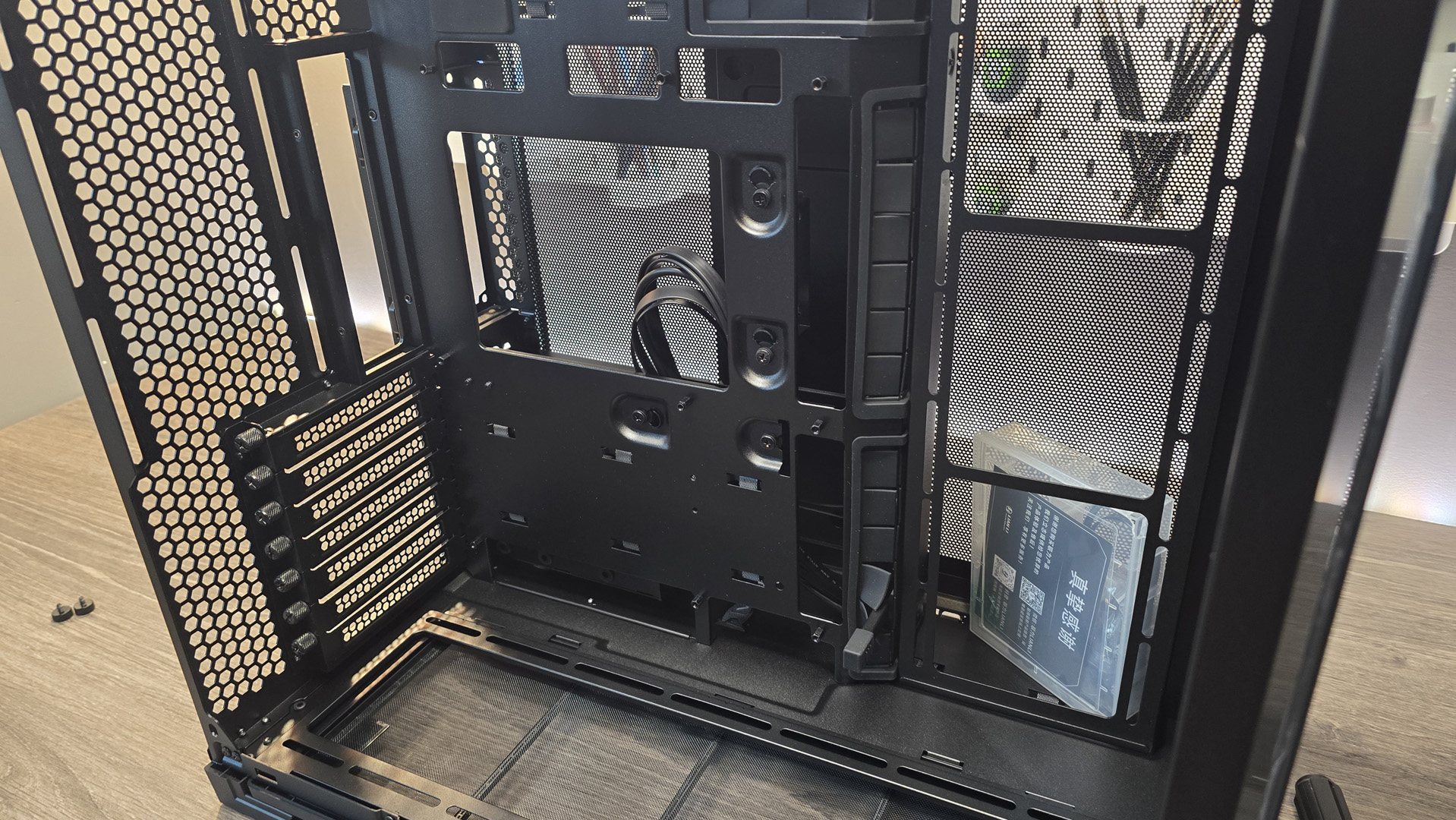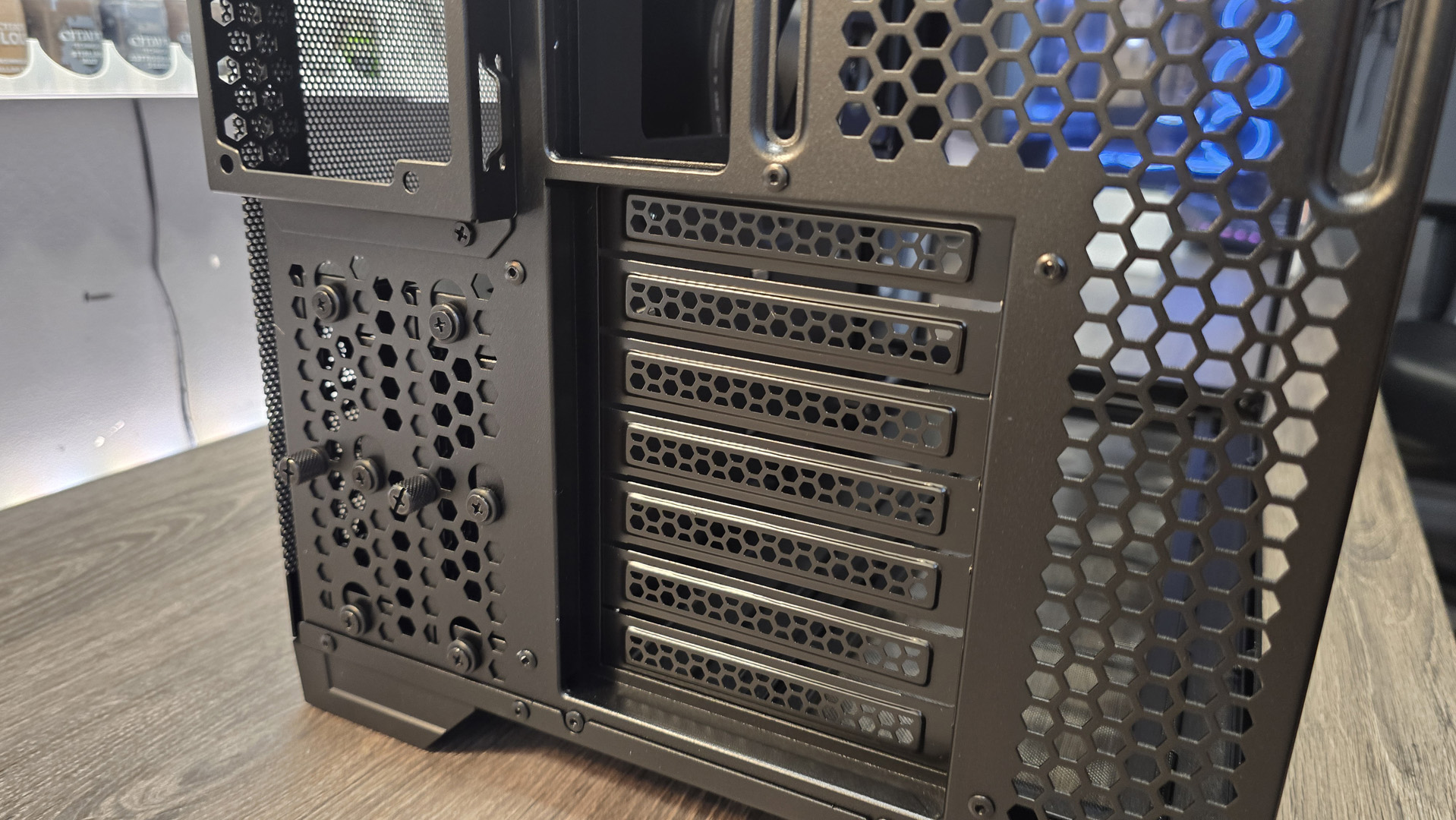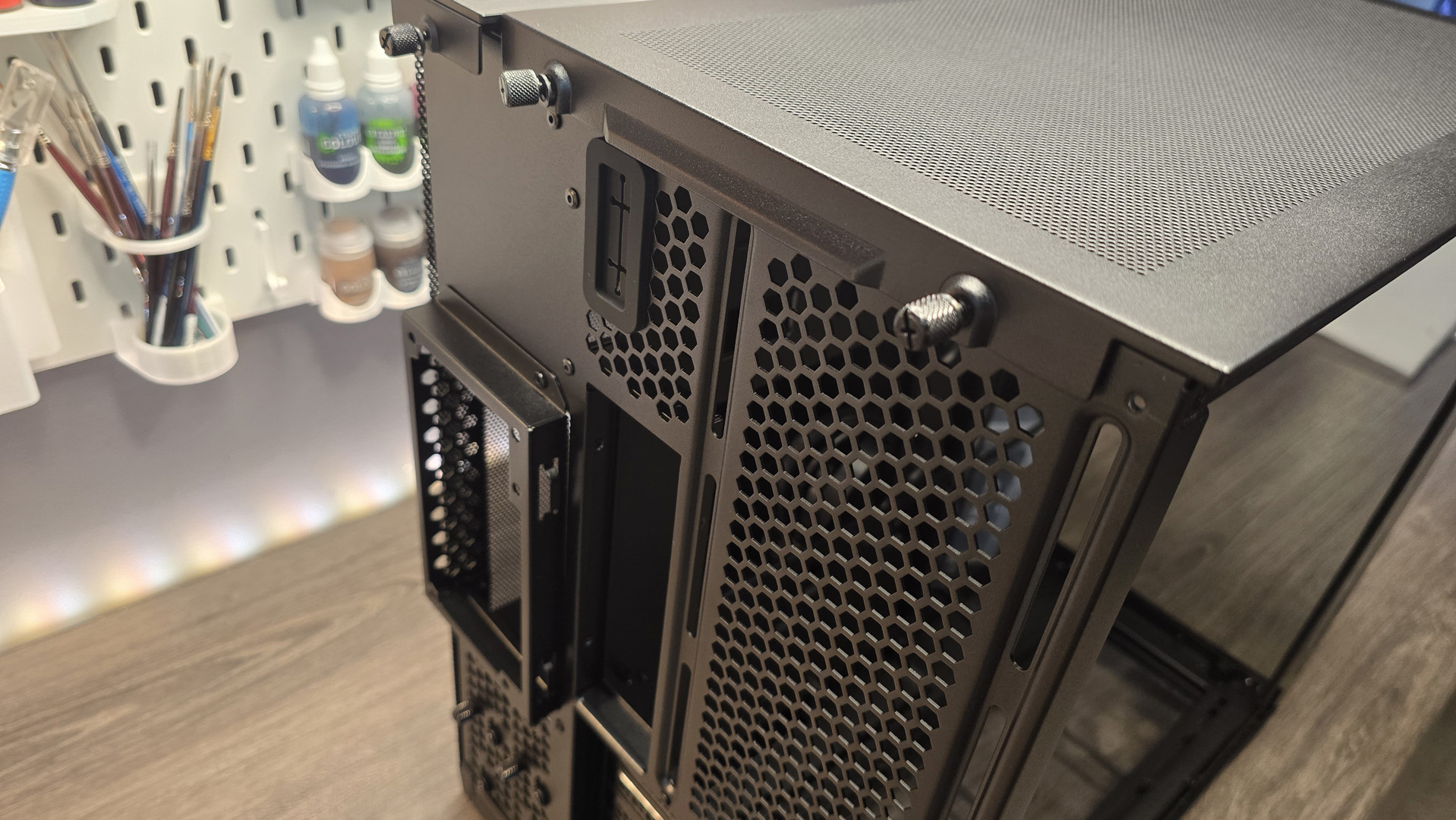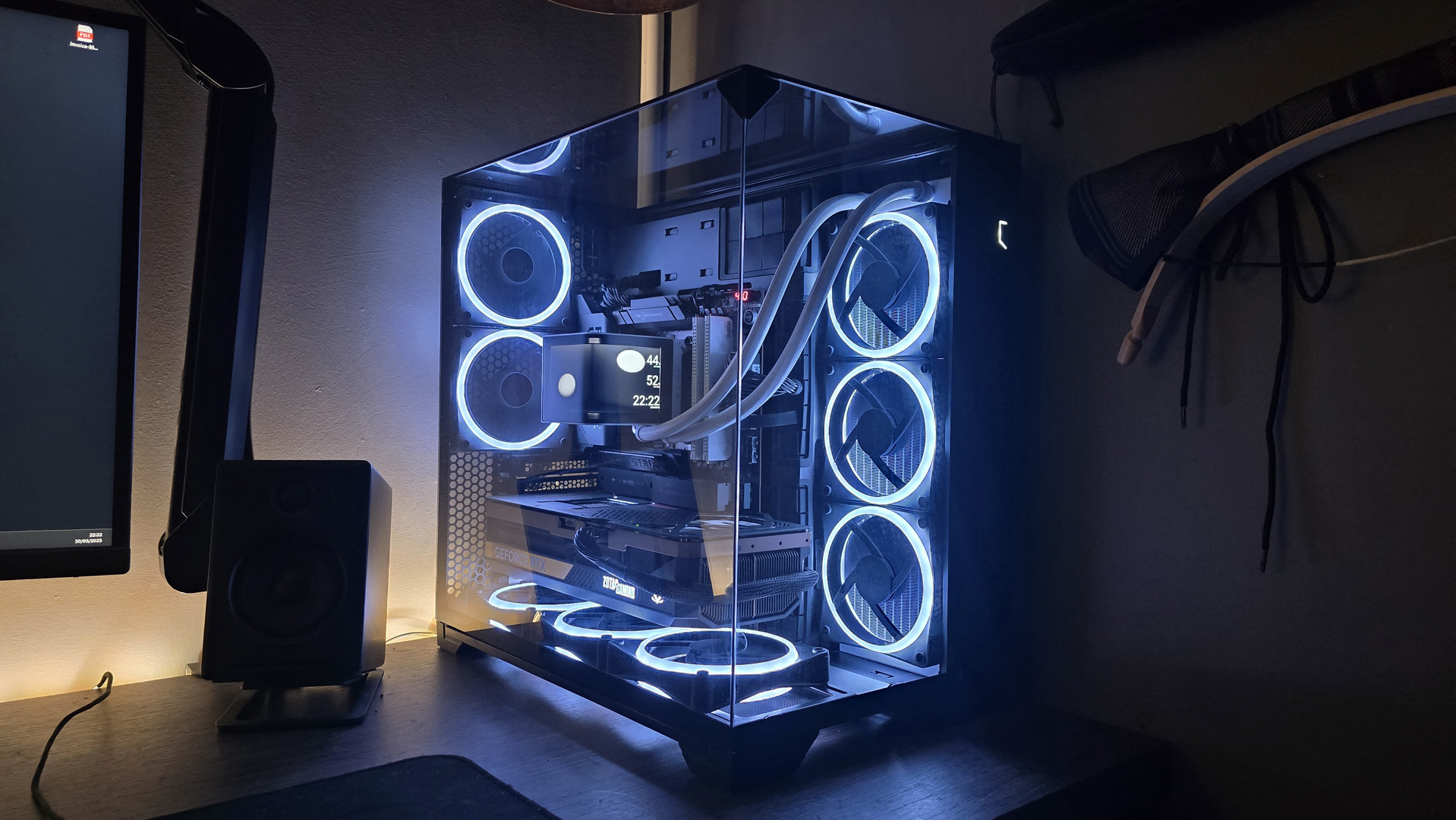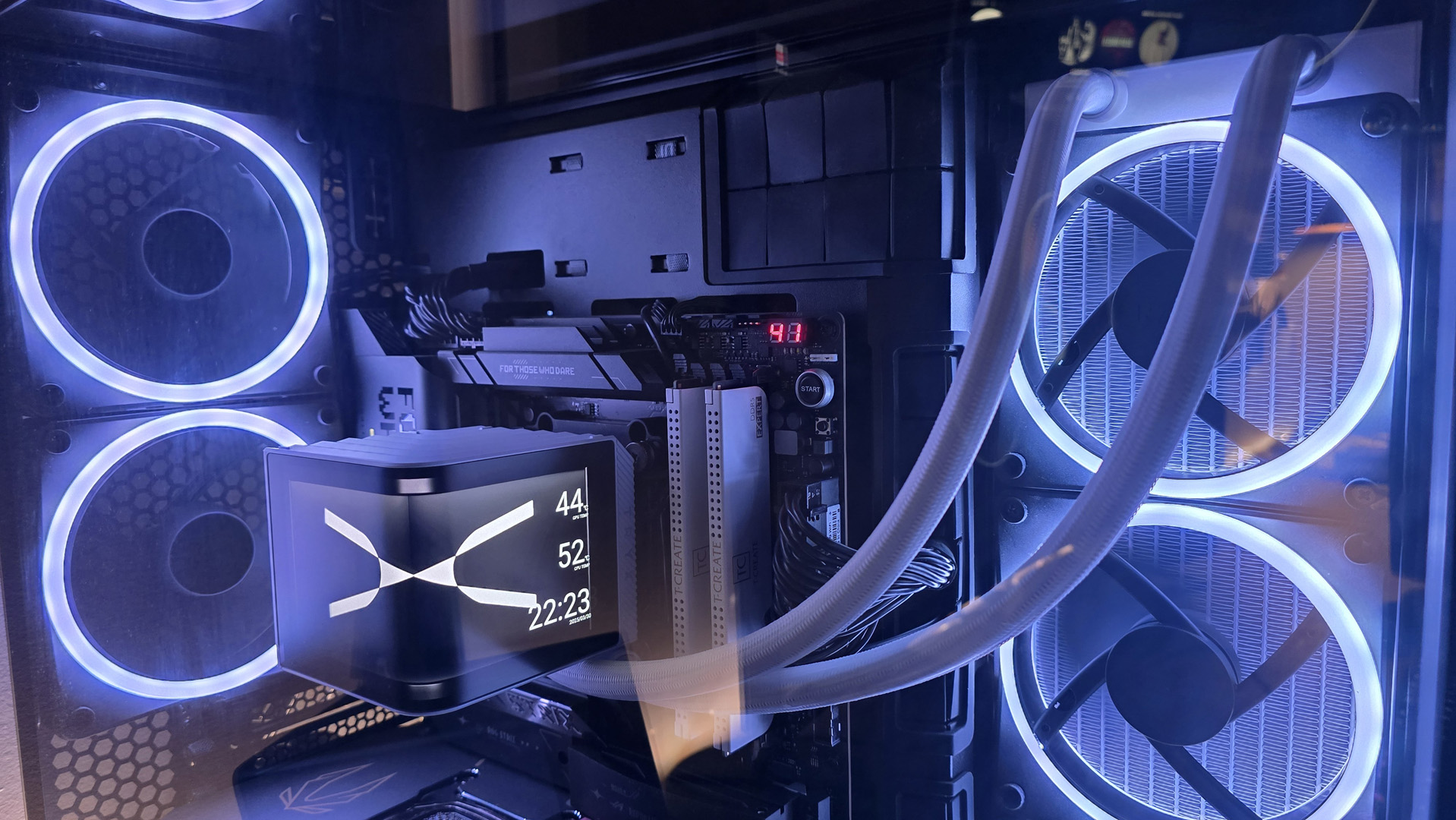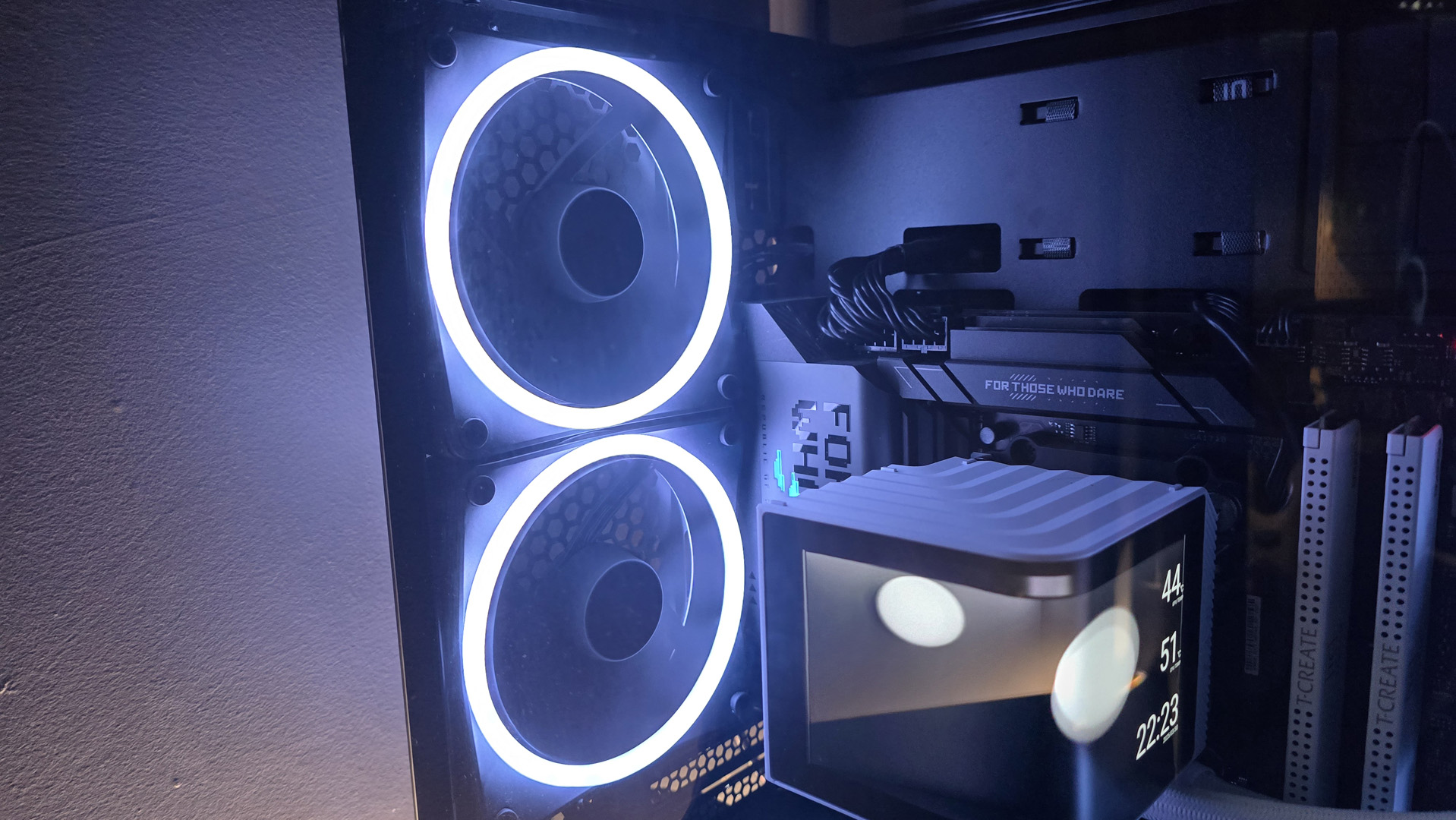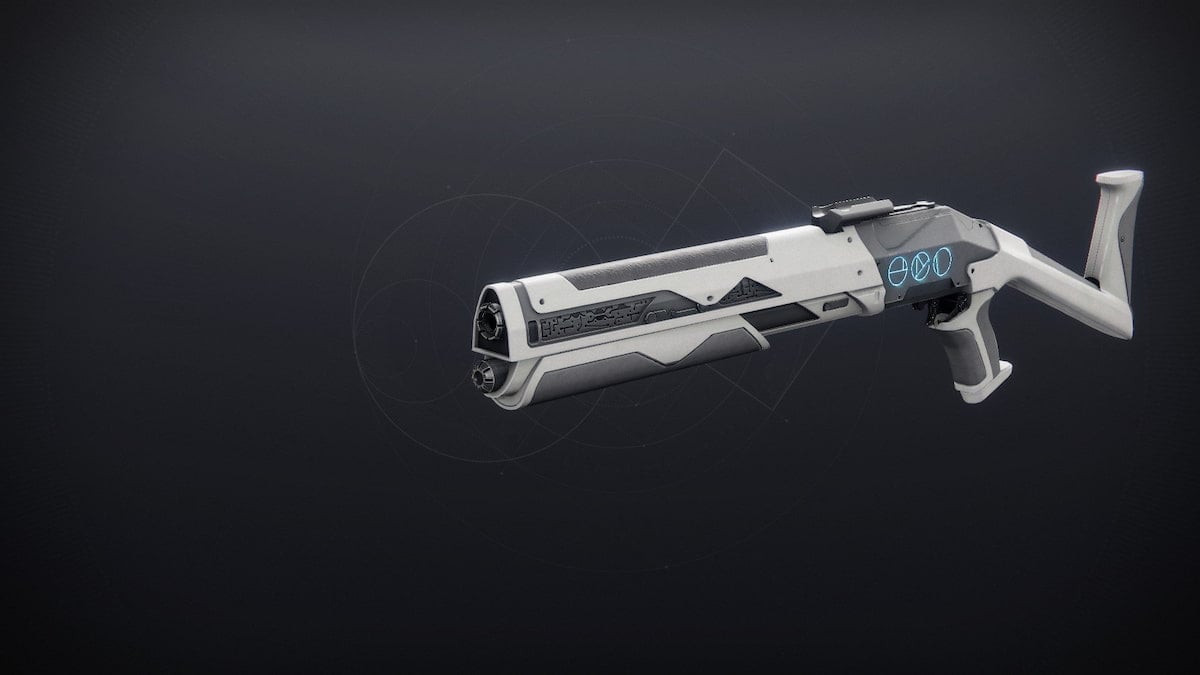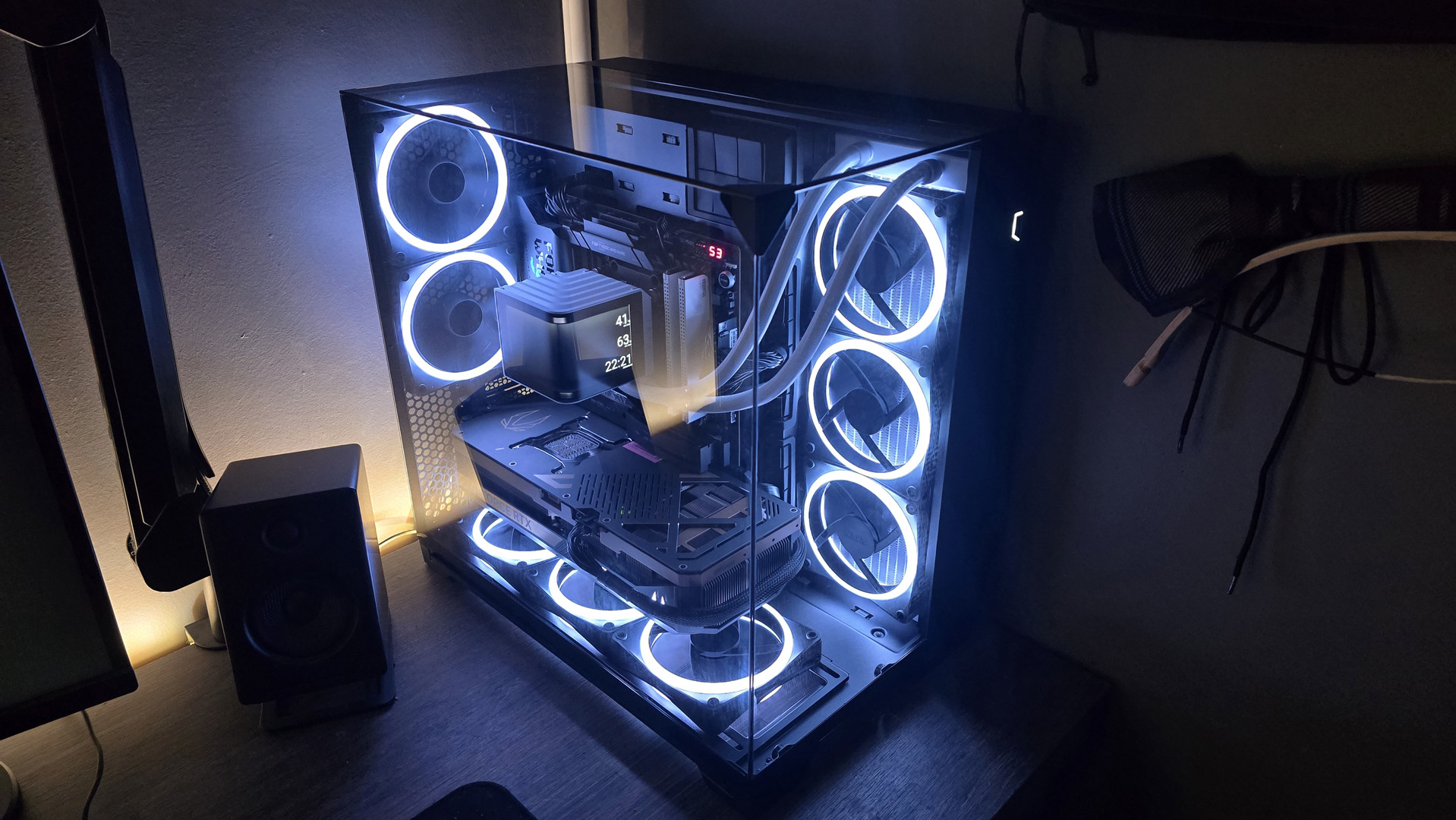
Exceptional versatility and style meets affordability.
This might be the best fishbowl case on the market right now. That’s a bold statement, I’ll admit, but I’m prepared to back it up. And okay, I suppose it’s probably not a huge surprise, either, given how Lian Li practically invented the entire category to begin with.
Its now legendary PC O11 Dynamic was, without a doubt, one of the most popular chassis of the day way back when it first launched, capturing the minds and desires of hobbyists, journalists, and influencers alike. Its bold smoked glass panel design, affordable price point, and impressive compatibility really drove home Lian Li’s position in a horrifically competitive market. And, well, you’d be hard pressed to go on PC Part Picker and not find a build immediately championing the thing during those pandemic years.
Fast forward half a decade though, and the ecosystem’s dramatically changed. The likes of Hyte, NZXT, Corsair, Thermaltake, Phanteks, and others have now fully jumped onto that bandwagon as well. It’s no longer enough to just stick with what you know and slightly tweak it year-on-year if you want to retain that chassis king title, and boy oh boy has Lian Li come out swinging with the O11 Vision Compact.
The Compact is actually an iterative update from the initial O11 Vision that launched back in 2023. The big difference between the two actually stems from what Lian Li’s done to the overall footprint of the thing. Unsurprisingly, given the name, it’s had its internal layout and dimensions significantly reduced to bring the overall heft of the thing down considerably. In total, we’ve lost 10.4 litres of internal space, and the dimensions have dropped by a good 32.5 mm on the length, 18.1 mm on the height, and 16.5 mm on the width.
Form factor: ATX Mid Tower
Dimensions: 44.8 x 28.8 x 44.6 cm
Motherboard support: ITX, mATX, ATX, E-ATX (up to 280mm) + BTF
Expansion slots: 7 horizontal
Front IO: 3.5 mm jack, 2x USB 3.0 Type-A, 1x USB 3.1 Type-C
Total fan support: 11
Fan count: 3x 120 mm / 2x 140 mm TOP; 3x 120 SIDE; 2x 120 mm REAR; 3x 120 mm BOTTOM
Radiator support: Up to 360 mm TOP; Up to 360 mm SIDE; Up to 360 mm BOTTOM
Graphics card support: 408a mm length
Storage: 2x 2.5-inch; 2x 2.5/3.5-inch
PSU support: ATX (up to 220mm)
Weight: 11.97 kg
Price: $124, £133, €132
That doesn’t sound like much, but when you consider it still supports E-ATX motherboards, full-length GPUs, four radiators, and 11 fans in its full-fat mesh cooling mode, that’s a seriously impressive cutback.
The real win, though, is the price… it’s nuts. The total cost is $124 right now at time of writing, or about £133 UK side. That is astoundingly cheap for what you’re getting. There are corners cut to make that possible, including an absolute lack of fans, but for that price, you get a chassis with effectively two running modes (full tempered glass or a mesh roof), plus an anti-GPU sag bracket, support for 2x 3.5-inch drives, removable radiator brackets on the bottom and the side, hidden AIO tubing runs, an incredibly well-equipped cable management system, and generally a beautiful-looking build when it’s done.
On first inspection, you’ll notice the case is incredibly DIY friendly, particularly for modders; there are some pop rivets holding things together, but the vast bulk of the chassis is held together with Phillips head screws. Most of the panels are held together with thumbscrews generally, or small screws, and you can even remove the front and roof brushed aluminium fascia panels entirely too.
Its default configuration comes with that mesh top panel solution. Remove that mesh fascia, and underneath you’ll be greeted by a removable radiator bracket, along with a support column anchored to that front glass window. Remove the column, and you can install the included top glass panel that Lian Li has bundled in with the chassis. It’s super quick and easy to do.
A swift glance at the internals, and you’ll spot an anti-sag bracket poking out of one of the rubber cable grommets. This is adjustable up and down, although in my case, when I was testing, combined with the Asus X870E-E and a fairly chunky Zotac triple-slot card, it didn’t quite go low enough to provide any major support and needed removing as a result.
The side radiator bracket, though… now, that is a work of art.
Cable management in the rear is also fairly well thought out. There are plenty of rubber grommets, along with Velcro straps and tie-off points along the bulk of it (something that’s becoming far less common these days, sadly). Lian Li’s also included a magnetic cable tidy door to help hide the majority of your cable mess once you’re done, and that also houses two 2.5-inch SSDs, swinging into position secured by magnets placed on either side. That’s insanely useful during the build process to keep it out of the way, although to be fair, you could just lift it up off its hinges and remove it entirely instead. As for the PSU, that’s got a protruding rear mounting solution that sticks out by 15mm or so, which honestly isn’t the end of the world and does give you a bit more space internally for cable management.
In an ideal world I’d have loved to see some plastic cable channels here instead of just Velcro straps, but that’s a very minor pet peeve, and once you’ve removed the two 3.5-inch HDD cages below, there’s plenty of room to just cram cabling down there if you so desire.
The side radiator bracket, though… now, that is a work of art. Engineering genius that is going to go mostly unappreciated. It’s secured in place internally with a thumbscrew on the PSU side of the motherboard tray. Remove that, and you can tilt it out entirely to then install your radiator and fans too.
What’s incredible about it is it’s actually reversible. You can simply flip it around to give yourself more space for radiators and fans if you’re running three 120mm fans in the floor. Alternatively, Lian Li has also included a rear cable grommet, not for cables, but for AIO tubing instead. So you could effectively leave the bracket where it is and instead run the AIO in reverse, with the tubes pointing out the back of the bracket, round the side, out the grommet, and to your CPU that way. A very unique and odd look, and personally I decided against that in my build, but it’s nice to have the option.
As for cooling, in the Vision mode, you’ve got max support for eight 120mm fans: three on the side (I recommend intake), three in the floor (intake again), and two in the rear (acting as your exhaust). With the mesh variant, you can slap another three 120mm fans in the roof (or 2x 140mm) acting as an exhaust there too. It naturally lends itself to being a positive airflow chassis, and temperatures during my time testing were relatively solid, certainly with the AIO pulling air in from the side.
After all, there’s a lot of glass here; don’t expect it to run too cool.
Test platform:
CPU: AMD Ryzen 9 9900X | RAM: 64 GB (2×32 GB) TeamGroup T-Create Expert DDR5 @ 6000 C34 | SSD: 2 TB Crucial T705 M.2 PCIe 5.0 SSD | SSD: 4 TB Crucial T500 M.2 PCIe 4.0 SSD | GPU: Zotac GeForce RTX 5090 Solid | Motherboard: Asus ROG Strix X870E-E Gaming WiFi | CPU Cooler: Tryx Panorama ARGB 360 | PSU: 1500W NZXT C1500 80+ Platinum
It took me around 1.5 hours to transfer my system over to the O11 Vision Compact, and that included the strip down out of NZXT’s H9 Elite as well. There’s very little I’d complain about, purely from a system-building perspective. Lian Li has really covered all the bases when it comes to that whole procedure, and it’s just a fantastically enjoyable thing to do.
The chassis itself, from a looks perspective, is exceptionally clean and, as the name suggests, surprisingly compact too. Still, it’s not without fault. I’m not convinced that rear AIO tubing passthrough is really worth it, and certainly in the non-mesh variant, there’s a huge metal gap above the motherboard that, without anything there, does look a bit barren.
✅ You value aesthetics above all: You want a clean, glass, fishbowl chassis, and you don’t mind spending a little extra for some fans.
❌ Extra fans aren’t on your radar: You don’t have the budget for additional air-cooling, or you’re not a big fan of dusting and case management.
That’s something that clearly Lian Li, has spotted as well, as in all the advertising materials, its build showcases feature a small display up there, which would be a nice touch if it didn’t conflict with the CPU power passthrough. In an ideal world, it’d have been far better for the motherboard to have just been shifted up about an inch or two. Not only to eliminate that negative space but also to give you a bit more wiggle room with those bottom-most motherboard connectors and the three floor intake fans as well.
But, and here’s the thing, it still floats in at around that $120 mark. Despite not having any fans or a fan controller (which does always feel like a misstep in a case that can support 11 of the bloody things), what you get for that investment is outstanding. With a super clean design, insane amounts of versatility, and potent cooling, even with that greenhouse effect, the Lian Li O11 Vision Compact is nothing if not a true champion in the PC building arena. Without a doubt, this may well be one of the best pc cases, I’ve tested in 2025.
